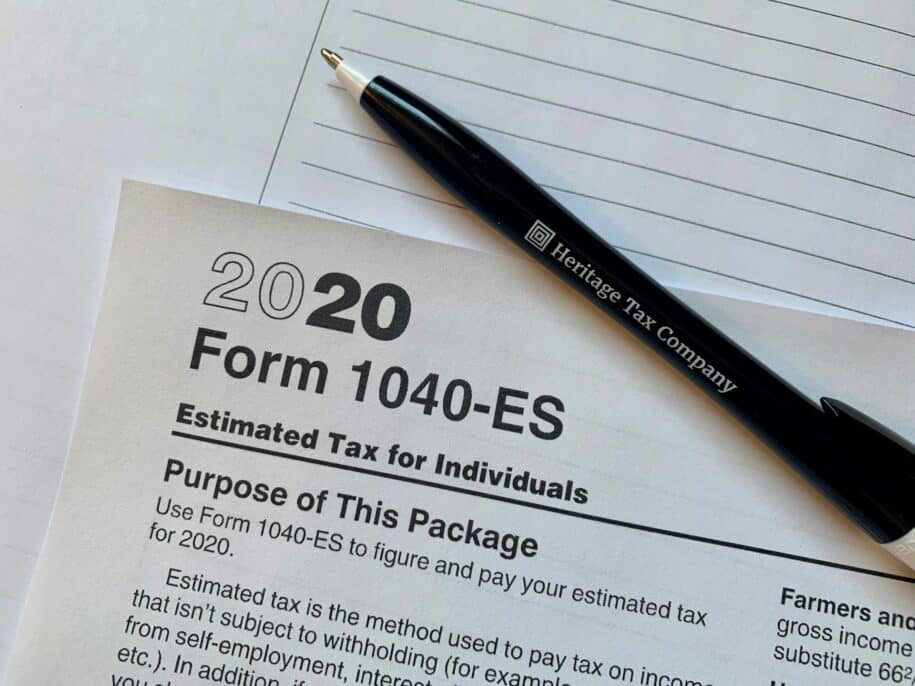You have more responsibilities as 1099 (independent contractor), but with an easy system put in place, you won’t have to worry about taxes.
Fewer and fewer people seem to be having real, salaried jobs these days. Companies don’t want to pay benefits as it hurts their bottom line, so many have moved to hiring independent contractors. As these people aren’t actually employees, they don’t have nearly as many legal protections as employers do.
Just look at the plight of Uber and Lyft drivers, getting paid for their services but being on the hook for everything else: insurance, liability, sick time, etc. No wonder there’s a huge push to get themselves to be treated as employees.
You yourself may be a “1099”, which is the informal term to people use to describe independent contractors in the U.S., referring to the tax form. In this was, you are, generally, either a “1099” or a “W-2” (which means a salaried employee, again referring to the tax form).
If you are an independent contractor, so you have lots of freedoms and flexibilities, at least usually. But you have much more responsibilities as well.
And the latter is true specifically in the realm of taxes. Because when you get paid $100 as a 1099, you get $100. But you don’t really earn all of that money, because you have to pay taxes. And if you’re not on top of this, you’re going to be in serious financial trouble.
So let’s talk about what you should do as an independent contractor to handle your tax situation.
Table of Contents
Disclosures
First, let me say that I am not a tax professional. If that means you want to skip to another of my almost 1,000 blog posts on personal finance, here’s the link to do so.
But while I’m not a tax professional, I have been a 1099 and paid taxes on my earnings.
So while I can’t tell you what’s best for your situation, I can tell you what worked for me. Furthermore, I can tell you about how to think about your situation, which may be more important than anything else.
With all that in mind, let’s get started.
The money isn’t all yours
Probably the most important part of managing your earnings as a 1099 is to remember that not all of the money you earn is yours. Some of it is owed to taxes.
Because of this, it’s vitally important to remember that for every (say) $100 you earn, you don’t actually have $100 to spend.
The reason I think it’s best to think of your money in this way is that you can think of taxes as something you do “as you go”, and not as something you need to scramble for when it comes to tax time.
But how much do you have to spend? And when is tax time?
Tax time comes four times a year
Many people think that tax time is once a year on or around April 15. And while that is true for some, independent contractors get to have more fun than just that. Instead, they have four tax times!
Independent contractors have to pay “estimated taxes” approximately one a quarter, roughly in line with the money you’ve earned to date. The IRS doesn’t want you to hold on to your tax money all year and then pay it in April; they want you to pay as you go. (And you get assessed penalties if you pay later than you should.)
Let’s take 2025, the year that this article was written. Here are the four dates to remember:
- Q1 2025 is due April 15, 2025 for income earned January 1 – March 31, 2025
- Q2 2025 is due June 16, 2025 for income earned April 1 – May 31, 2025
- Q3 2025 is due September 15, 2025 for income earned June 1 – August 31, 2025
- Q4 2025 is due January 15, 2026 for income earned September 1 – December 31, 2025
If you’re looking at this and going, “hey wait, one of those periods is two months long, and another is four months long!”, all I have to say is 🤷. Just go with it.
Another interesting point is that your Q1 taxes are for the new year is due at the same time as your tax return is due for the previous year. Yes, they are separate tasks, and you need to do both.
And speaking of separate tasks, when you pay estimated taxes, you need to pay your federal taxes and also your state taxes as well. Don’t forget. So you need to do all of this twice.
How much should you put away?
Here’s where I hedge and state that your situation is unique and I can’t really tell you what you should do.
But here are some tings to consider.
The IRS has an tax withholding estimator site you can use to figure out how much tax you should be paying. I’d look at that and see if it works for you.
But another, less precise, more “ballpark” method, might work better for you, and that’s to look at your tax rates.
At the time of writing, a 40 year old person who is single and who makes $100,000 a year is in the 22% federal tax bracket But because of our progressive tax system, this person wouldn’t owe 22%, but you have to add in self-employment taxes (15.3%). You’re likely looking at around 26%.
And to take Oregon, the state I live in, this person would be paying an effective tax rate of around 8%.
26% plus 9% is 34%. This person could put 34% away and almost certainly have their bases covered, as this calculation doesn’t include any deductions that could reduce their taxable income.
In general, I think many earners would be fine putting away around 30% of their earnings in taxes. If they are higher earners, 35% would be safer.
So with 30%, think of every $100 you earn as being more like $70. With 35%, it’s more like $65.
I recommend putting away a little more than you need to. It doesn’t hurt, and I don’t think there’s anything wrong with a short-term interest-free loan to the government. (Even this one.) If you overpay, you’ll eventually get it back.
Where to put this money
I recommend you separate out the money you’re to pay in taxes as soon as you get it, so never feel like you had it in the first place. Take that money and put it in savings account (or bucket) that’s specifically allocated just for tax payments. Don’t just put it with your other savings, as it’s not really savings!
Then, when it’s time to pay your estimated taxes, you transfer the money back to your checking account and pay your estimated taxes. You can do this online for federal, and your state probably has a similar payment portal too.
Example
Here’s how this would work:
Let’s say you get paid weekly, and you get $1,000 a week. Using the 30% guideline above, that means that $300 of that money should be allocated to taxes. So each week, you transfer $300 to your tax savings account. (You can do it less frequently, but the risk is that you forget.)
Then when the quarter is over, you’ve earned $13,000, so you should have $3,900 in your tax savings account. When it’s time to pay, transfer that money back to your checking account. How you divide that $3,900 between federal and state taxes is situation dependent, but since this is only an estimate, you could pay $2,860 to federal (22%) and $1,040 to state (8%).
Don’t skip out on your taxes as a 1099
Just because the person who sends you your checks doesn’t handle your taxes doesn’t mean you’re off the hook on paying them. It’s absolutely heartbreaking to me when I hear from clients and other people who are independent contractors who didn’t factor in the need to pay taxes, and are hit with a nasty surprise come tax time.
Luckily, you can put a system in place that takes care of your taxes with minimal hassle, giving you many of the benefits of being an employee, without actually being one.



